Choosing the Right PCB Manufacturing Factory: A Comprehensive Guide
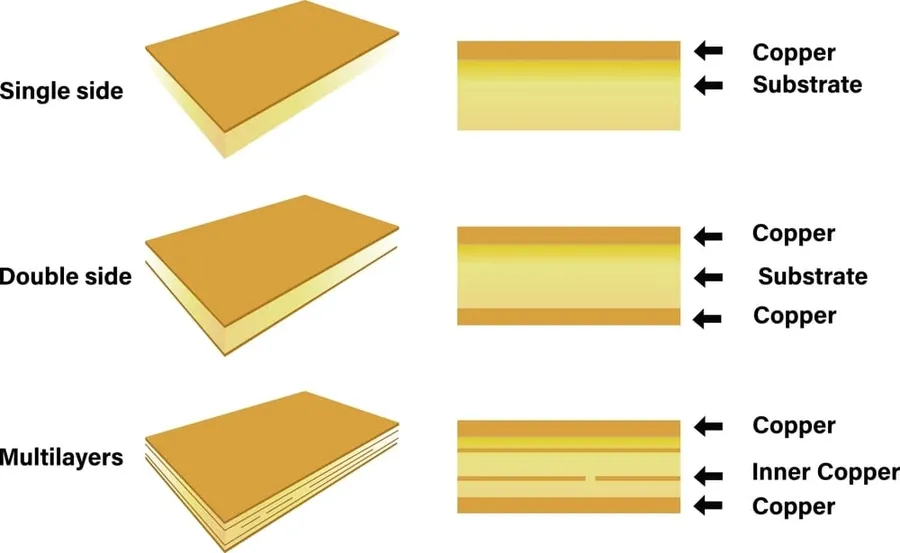
Printed circuit boards (PCBs) are the backbone of modern electronics, silently powering everything from smartphones to industrial machinery. Choosing the right PCB manufacturing factory is crucial for bringing your electronic designs to life, impacting product performance, cost, and time to market. This guide explores the key factors in selecting a reliable PCB manufacturing factory, ensuring your project's success.
Understanding Your PCB Manufacturing Needs

Prior to engaging a PCB manufacturing factory, a meticulous assessment of your project's specific needs is paramount. This involves a detailed consideration of several critical factors, including the complexity of the circuit board design, the types of materials required, the anticipated production volume, and the necessary turnaround time. Furthermore, it is essential to determine whether your project necessitates prototype development, small-batch production runs, or large-scale mass manufacturing.
- PCB Complexity
Determine the number of layers, trace widths, and via types required for your design. High-density designs necessitate advanced manufacturing capabilities. - Material Requirements
Specify the base material (e.g., FR-4, aluminum, flexible substrates), thickness, and copper weight necessary to meet your project's performance and environmental requirements. - Production Volume
Estimate the number of boards needed for prototyping, pilot runs, and mass production. This will significantly impact cost and turnaround times. - Turnaround Time
Define your project's deadlines and required lead times for fabrication and assembly. Select a manufacturer that can consistently meet your timeline. - Production Type
Ascertain whether your immediate need involves prototypes, small-batch runs, or full-scale production. This influences the choice of manufacturer and process.
Key Services Offered by PCB Manufacturing Factories
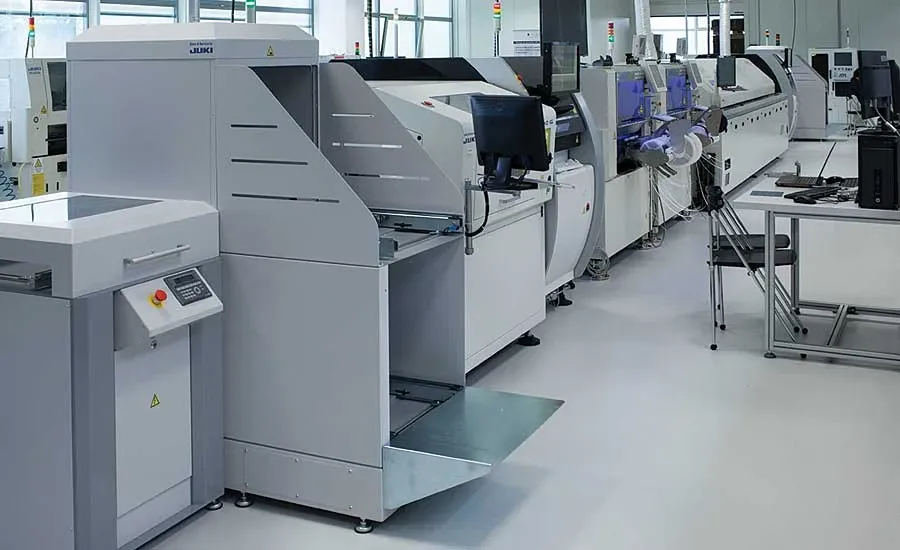
PCB manufacturing factories provide a comprehensive suite of services essential for bringing electronic designs to life. These services span from initial design to final product testing, encompassing various crucial stages to ensure the delivery of high-quality, functional printed circuit boards. Understanding these services is paramount for selecting the right manufacturing partner.
- PCB Design and Engineering
This initial phase involves translating electronic schematics into physical PCB layouts. Design services may include component placement optimization, routing for signal integrity, thermal management considerations, and design for manufacturability (DFM) analysis. - PCB Fabrication
The core manufacturing process where the physical board is created. This involves imaging the design onto copper clad laminates, etching away unwanted copper, drilling vias and through-holes, applying solder mask and silkscreen, and surface finish plating (e.g., ENIG, HASL). - PCB Assembly
This stage entails mounting electronic components onto the fabricated PCB. Assembly services include: Surface Mount Technology (SMT), Through-Hole Technology (THT) and mixed assembly, involving the use of automated pick-and-place machines, reflow ovens, and wave soldering for attaching components. This process is essential for transforming a bare board into a functional circuit board. - PCB Testing and Inspection
Quality control procedures implemented to identify defects and ensure functionality. Testing methods include: automated optical inspection (AOI), in-circuit testing (ICT), and functional testing (FCT) to simulate real-world operating conditions. These tests verify component placement, solder joint integrity, and overall board performance. - DFM (Design for Manufacturing) Analysis
This involves analyzing a PCB design to ensure it is suitable for efficient and cost-effective manufacturing. DFM feedback helps to identify potential issues early in the design cycle, reducing the risk of errors and delays during production, and optimizing the design for better yield and reliability.
| Technology | Description | Typical Applications |
|---|---|---|
| Surface Mount Technology (SMT) | Components are mounted directly onto the surface of the PCB. | High-density boards, portable devices, consumer electronics |
| Through-Hole Technology (THT) | Components with leads are inserted into holes drilled into the PCB and soldered on the opposite side. | High-power applications, robust connections, prototypes |
| Mixed Assembly | Combines both SMT and THT components on the same board. | Diverse applications, bridging requirements of different component types |
Factors to Consider When Choosing a PCB Manufacturing Factory
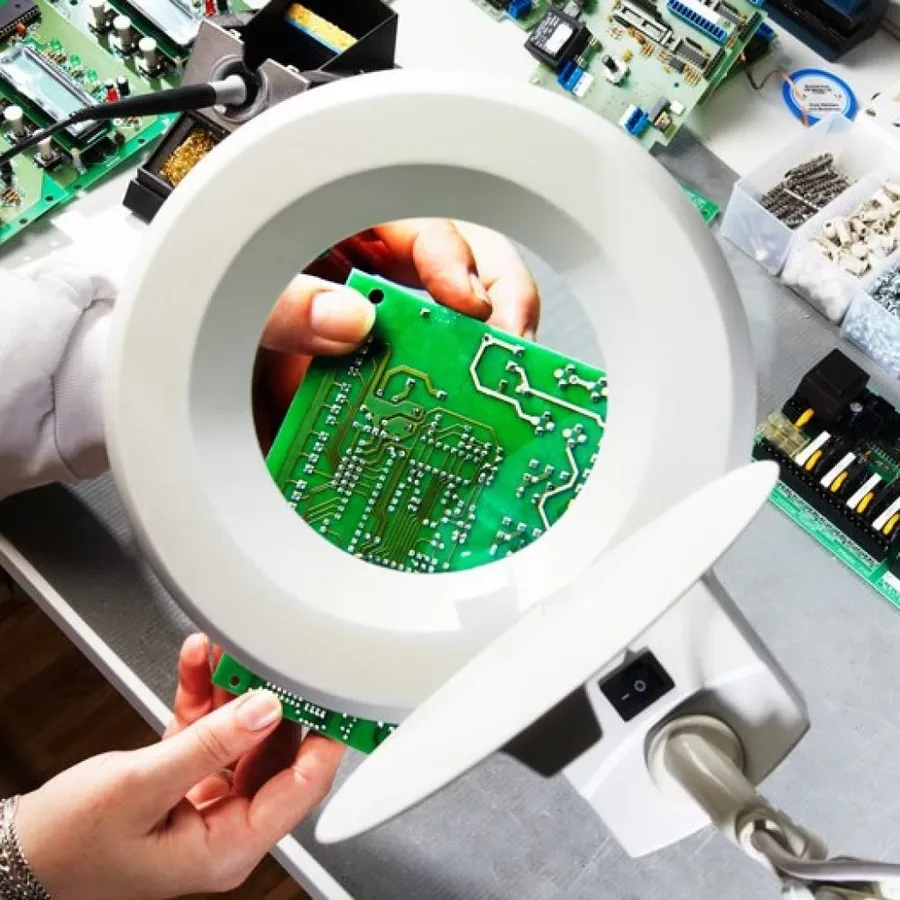
Selecting the right PCB manufacturing partner is crucial for the success of any electronics project. A multitude of factors must be carefully evaluated to ensure the chosen factory can consistently deliver high-quality PCBs that meet the specific demands of your design. These considerations range from technological capabilities and material options to quality assurance processes and customer service.
| Factor | Description | Importance |
|---|---|---|
| Technology Capabilities | Assess the factory's equipment and processes for precision fabrication, SMT, through-hole assembly, and specialized finishes. | Ensures ability to meet design requirements. |
| Material Options | Verify the availability of preferred materials (FR-4, Aluminum, flex), various copper thicknesses, and dielectric constants. | Essential for performance and specific applications. |
| Quality Assurance | Confirm the factory has implemented rigorous checks such as AOI, ICT, and FCT. | Critical for product reliability and minimizing defects. |
| Certifications | Look for compliance with ISO 9001, AS9100 (for aerospace), or other relevant industry standards. | Demonstrates commitment to quality management and adherence to industry standards. |
| Turnaround Time | Evaluate the typical lead time for prototypes and mass production, and if it aligns with project timelines. | Crucial for meeting deadlines and project schedules. |
| Pricing Transparency | Request detailed quotes and understand all cost components, including tooling, materials, and assembly charges. | Ensures cost-effectiveness and eliminates unexpected expenses. |
| Customer Service | Assess the factory's responsiveness, communication, and support throughout the ordering and manufacturing process. | Important for efficient communication and issue resolution. |
| Reputation | Research the factory's track record through reviews, referrals, and industry recognition. | Indicates reliability and consistency in quality and service. |
Prototyping vs. Mass Production: Finding the Right Fit
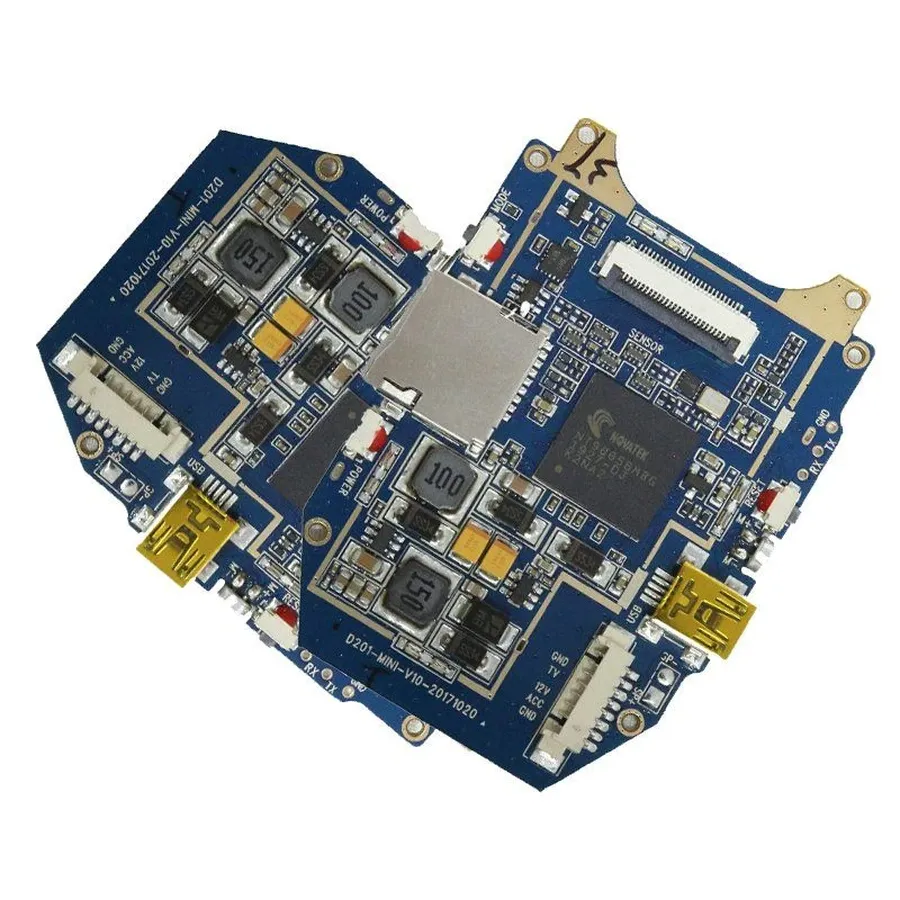
The distinction between PCB prototyping and mass production is critical when selecting a manufacturing partner. Prototyping focuses on validating designs and functionality with small quantities, while mass production requires scalable processes to efficiently produce large volumes. Matching your project phase with a factory's expertise is crucial for project success and cost-effectiveness.
| Feature | Prototyping | Mass Production |
|---|---|---|
| Volume | Low (typically 1-100 boards) | High (hundreds to millions of boards) |
| Turnaround Time | Fast (days to a few weeks) | Longer (weeks to months) |
| Cost Per Board | High | Low |
| Process Flexibility | High, easier to accommodate changes | Lower, changes require more process adjustment |
| Purpose | Design verification and functionality testing | Large-scale commercial production |
| Equipment Focus | Versatile machines and manual adjustments | Automated and high-throughput machines |
| Material Handling | Flexible handling of different materials for testing | Optimized for bulk material processing |
Ideally, a PCB manufacturing partner should offer robust capabilities for both prototyping and mass production. This dual capability ensures a smooth transition from initial design verification to full-scale manufacturing, minimizing delays and streamlining the overall product lifecycle.
Technology and Equipment Capabilities
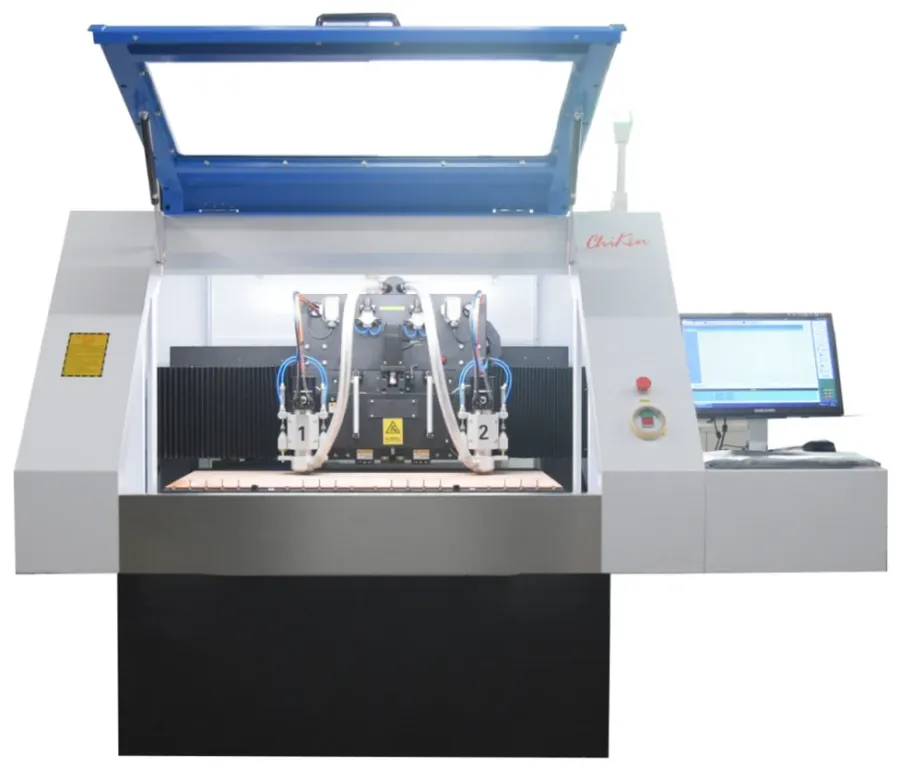
A PCB manufacturing factory's technological infrastructure and equipment are paramount for producing high-quality printed circuit boards. Modern machinery enables precise fabrication, efficient automated assembly, and rigorous quality control, ensuring that the final product meets stringent specifications. Evaluating a factory's equipment is crucial to determine its capability to handle your project's requirements.
| Equipment Category | Specific Equipment | Function | Importance |
|---|---|---|---|
| Fabrication | CNC Drilling Machines, Laser Direct Imaging (LDI) Systems, Etching Machines | Precise drilling of vias and holes, creating circuit patterns using lasers, and controlled material removal to form conductive traces. | Critical for accuracy and precision in PCB manufacturing. Ensures design specifications are met with minimal variation. |
| Assembly | Pick and Place Machines, Reflow Ovens, Wave Soldering Machines | Automated placement of components on the PCB, controlled heating for solder reflow, and soldering of through-hole components. | Improves speed and accuracy in component placement, ensuring proper soldering and electrical connections. |
| Quality Control | Automated Optical Inspection (AOI) Systems, In-Circuit Testers (ICT), X-ray Inspection Equipment | Automated visual inspection for defects, electrical testing of circuits, and internal inspection for solder joints and component alignment. | Vital for ensuring product reliability and identifying defects at different stages of manufacturing, avoiding costly errors. |
| Surface Finish | Electroless Nickel Immersion Gold (ENIG) Plating Line, Hot Air Solder Leveling (HASL) System | Application of protective finishes on copper traces to prevent oxidation and ensure solderability. | Critical for preserving PCB solderability and preventing environmental corrosion. |
| Impedance Control | TDR (Time Domain Reflectometry) Testing Equipment | Measurement and control of signal impedance to ensure signal integrity for high-frequency applications. | Necessary for high-speed and high-frequency applications where signal integrity is crucial. |
The technological capabilities of a factory extend beyond just the equipment. Consider their ability to handle various surface finish options like ENIG, HASL, and immersion silver, as well as their capacity for impedance control to ensure signal integrity in high-frequency applications. These technological aspects collectively define the range and reliability of the PCBs a factory can produce.
Quality Control and Testing Processes
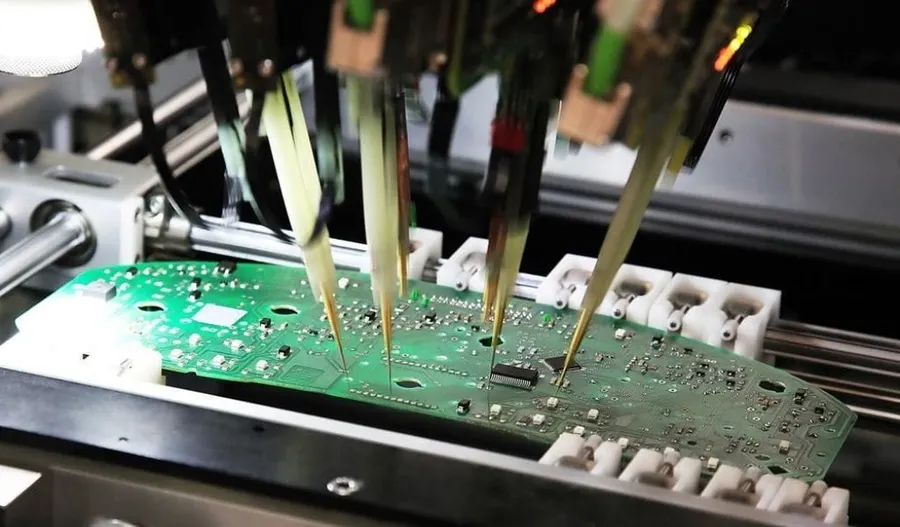
Rigorous quality control and testing are paramount in PCB manufacturing to ensure reliability and performance. A comprehensive approach involves multiple stages of inspection and testing, leveraging both automated and manual methods to identify and rectify defects early in the production process, safeguarding the integrity of the final product.
| Testing Stage | Description | Purpose | Technologies/Methods |
|---|---|---|---|
| Automated Optical Inspection (AOI) | Automatic visual inspection of the PCB using high-resolution cameras. | Detects surface defects like shorts, opens, missing components, and incorrect placement. | High-resolution cameras, image processing software, machine learning |
| In-Circuit Testing (ICT) | Electrical testing of individual components and circuits on the assembled PCB. | Verifies correct component placement, orientation, and solder joint integrity; checks for electrical shorts and opens. | Test probes, test fixtures, electrical measurement equipment |
| Functional Testing (FCT) | Testing of the assembled PCB under simulated operating conditions. | Ensures that the PCB functions correctly according to the design specifications. | Test jigs, custom test software, power supplies, input/output devices |
| X-Ray Inspection | Non-destructive inspection using X-rays. | Detects hidden defects like solder voids, insufficient solder, and misaligned components, particularly in Ball Grid Array (BGA) packages. | X-ray imaging equipment, image analysis tools |
| Microsection Analysis | Destructive physical analysis of the PCB cross-section. | Analyzes layer alignment, copper plating thickness, and overall board structure. | Microscopes, metallographic preparation tools |
Frequently Asked Questions about PCB Manufacturing
Navigating the PCB manufacturing process can raise numerous questions. This section addresses common queries related to PCB manufacturing, offering concise and authoritative answers to help you make informed decisions.
- What are the typical minimum order quantities (MOQs) for PCB manufacturing?
MOQs vary significantly among PCB manufacturers. Some specialize in prototyping with low MOQs (even single boards), while others, particularly those focused on mass production, have higher MOQs. It's essential to inquire about specific MOQs early in your vendor selection process to align with your project volume needs. Consider options like pooling services if you require small quantities. Note that higher quantities typically result in lower per-unit costs due to economies of scale. - Which file formats are commonly accepted by PCB manufacturing factories?
The industry standard file format for PCB manufacturing is Gerber RS-274X. This format encodes the layer-by-layer design of the PCB. In addition to Gerber files, most manufacturers also accept drill files in Excellon format, as well as netlists and bill of materials (BOM) files. It is crucial to ensure that all files are complete and accurately reflect your design for a smooth manufacturing process. Certain manufacturers might accept formats like ODB++ which provide more comprehensive data but Gerber remains the most universal choice. - What are the standard lead times for PCB fabrication and assembly?
Lead times in PCB manufacturing depend on the complexity of the board, the manufacturing process involved, and the factory's capacity and schedule. Simple prototypes can have lead times ranging from a few days to a week. Complex boards requiring specialized processes or large-scale assembly can take several weeks. It is crucial to confirm the estimated lead time with the manufacturer and factor in additional time for shipping and potential delays. Expedited services are often available for a premium for shorter lead times. - How are different PCB materials like FR-4, Aluminum, and flexible substrates utilized?
FR-4 is the most common material used due to its good balance of electrical insulation and mechanical strength and cost-effectiveness, suitable for a wide range of general applications. Aluminum substrates are used where thermal conductivity is paramount, making them ideal for power electronics and LED lighting. Flexible substrates offer mechanical flexibility, and are useful for applications requiring bending or folding, such as in consumer electronics and wearable devices. Each material has different performance characteristics, so it's essential to select the right one based on your design requirements. - What is DFM (Design for Manufacturing) analysis, and why is it important?
DFM analysis is a crucial step in PCB manufacturing which involves checking your PCB design for potential manufacturability issues before production begins. DFM identifies problems like incorrect component clearances, solder mask issues, and insufficient drill spacing. It is important because addressing these issues early, before fabrication, can prevent delays, costly rework, and ensure better yield rates during production. A reputable manufacturer will offer DFM analysis to optimize your design for efficient and reliable manufacturing. - What shipping options are typically available, and how does this impact the total time?
PCB manufacturing factories typically offer a range of shipping options, including express courier services (DHL, FedEx, UPS), standard air freight, and sea freight. Express courier services are the fastest, reducing delivery time to a few days, but are more expensive. Standard air freight takes longer, typically a week or two, and is moderately priced. Sea freight is the slowest and most economical method, suitable for large orders where time is not a critical constraint. The shipping method directly impacts your total delivery time, so choose based on your project timeline and budget. - What is the role of surface finishes in PCB manufacturing?
Surface finishes protect the exposed copper on a PCB from oxidation and corrosion and provide a solderable surface for component assembly. Common surface finishes include HASL (Hot Air Solder Leveling), ENIG (Electroless Nickel Immersion Gold), and immersion tin or silver. The choice of finish depends on the application, performance requirements, and cost considerations. ENIG provides a flat and highly solderable surface, suitable for fine-pitch components, but is more expensive than HASL. Selecting the correct finish is vital for the longevity and reliability of your PCB assembly.
Cost Analysis and Budgeting for PCB Manufacturing
Understanding the cost drivers in PCB manufacturing is crucial for effective budgeting and project management. This section explores the key factors influencing PCB manufacturing costs and provides guidance on how to approach cost analysis to achieve a balance between price and quality.
| Cost Driver | Description | Impact on Cost |
|---|---|---|
| Material Costs | The type of substrate used (e.g., FR-4, aluminum, flex) directly impacts cost. Higher-performance materials often incur higher costs. | Significant; can vary widely. |
| Layer Count | The number of copper layers in the PCB. More layers lead to more complex manufacturing processes. | High; increases with each additional layer. |
| Board Complexity | Factors such as the size and number of vias, trace width and spacing, and the presence of complex geometries. | Medium to high; complexity drives up production costs. |
| Surface Finish | Options like HASL, ENIG, and Immersion Silver vary in cost, performance, and longevity. Gold finishes are more expensive. | Medium; depends on the finish type. |
| Manufacturing Volume | The quantity of PCBs being produced. Larger production runs often result in lower per-unit costs. | Significant; economies of scale apply. |
| Testing and Quality Control | The extent of testing and quality control performed, including AOI, ICT, and FCT, impacts costs. | Medium; necessary for reliability. |
| Lead Time | Shorter lead times or rush orders can significantly increase costs due to expedited processes. | Medium to high; premium for faster turnaround. |
| Special Features | Specific requirements like controlled impedance, blind and buried vias, and specialized laminates will affect costs. | Medium to High; depends on specific requirements. |
To effectively manage costs, obtain multiple quotes from different PCB manufacturing factories. This ensures price transparency and allows for a comprehensive comparison. It is vital to remember that the cheapest option may not always be the best, and balancing cost with quality is necessary to guarantee a reliable and performing final product. Be sure to provide clear and detailed specifications to manufacturers, which allows for the most accurate and comparable quotes.
Logistics, Lead Times, and Shipping Options
Efficient logistics, predictable lead times, and reliable shipping are critical components of a successful PCB manufacturing partnership. Selecting a factory that not only produces high-quality boards but also manages the delivery process effectively is essential to ensure project timelines are met.
- Lead Time Factors
Understand how different factors affect the overall lead time of your PCB order. These factors include design complexity, layer count, material availability, and production queue. A reliable manufacturer will provide an estimated timeline at the start. - Production Time
This is the actual time taken by the factory to produce the circuit boards. This depends on the chosen technology and production line scheduling. - Shipping Time
This the time for your PCBs to be delivered. This varies based on the shipping method, the location of the factory, and your address. Standard shipping and expedited shipping options should be considered for timeline purposes.
| Shipping Method | Typical Transit Time | Cost | Tracking |
|---|---|---|---|
| Standard Shipping | 5-15 business days | Lower | Yes |
| Express Shipping | 1-5 business days | Higher | Yes |
| Local Courier | 1-2 business days | Dependent on Distance | Yes |
Maintaining open lines of communication with your PCB manufacturer is also essential. A factory that proactively informs you of any production or delivery delays demonstrates transparency and reliability, fostering a partnership based on mutual trust and understanding.
Choosing the right PCB manufacturing factory requires a careful evaluation of your specific needs, the factory's capabilities, and quality control practices. By thoroughly investigating all of these factors, you can partner with a PCB manufacturing factory that supports your project from design to completion, ultimately leading to a successful and efficient manufacturing process. For the best results, focus on a PCB manufacturing factory that aligns with your project's volume, complexity, and required quality standards.
 AnyPCBA
AnyPCBA